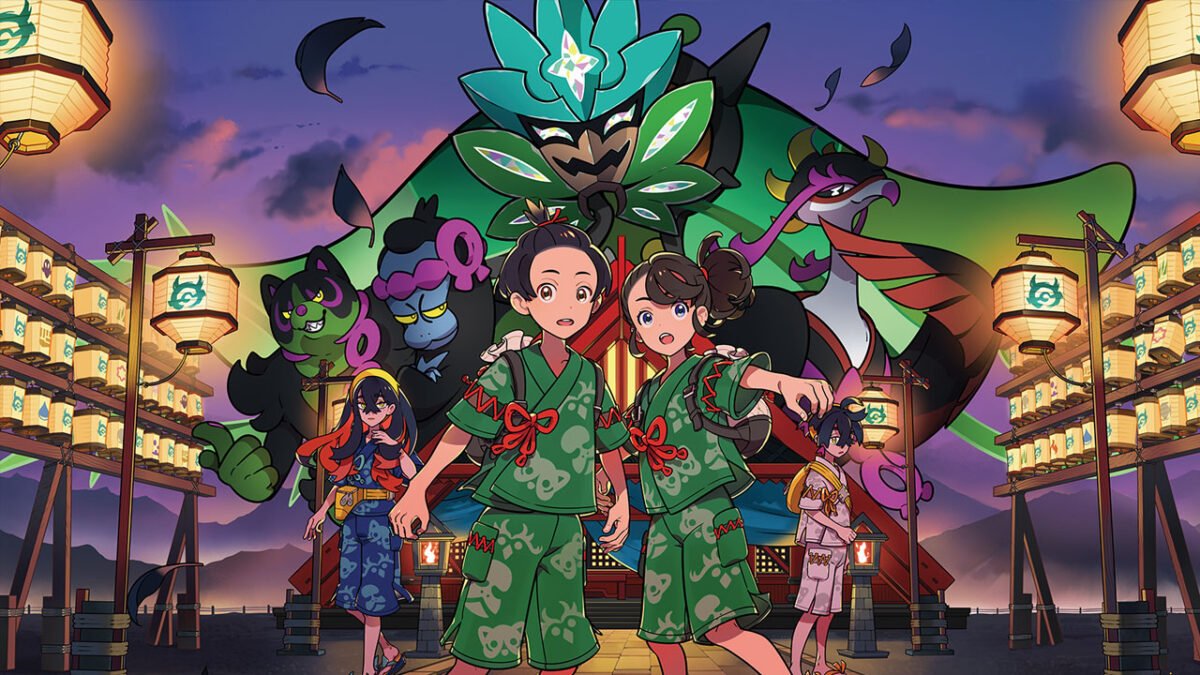After a complicated launch last fall, Pokémon Scarlet & Violet beckons us back to Paldea for The Teal Mask, the first half of its DLC.
The kick-off for Pokémon’s ninth generation was a rocky one. Pokémon Scarlet & Violet was perhaps Game Freak’s most ambitious monster-catching game to date, capping a huge year of multiple main series entries. It came with a heaping of bugs and graphical issues that turned many long-time fans away, yet maintained the series’ reputation as a commercial juggernaut—outselling many of its next-gen competitors last holiday season.
Whether you loved the game or bounced off it, The Teal Mask—first half of Pokémon Scarlet & Violet‘s The Hidden Treasure of Area Zero DLC—presents a golden opportunity to either return triumphantly to Paldea or give it another chance.

It’s been a couple generations now since Game Freak steered their money-printing franchise from its original release model, where a pair of main games (ie. Pokémon Diamond & Pearl) would be followed by a third game (like Pokémon Platinum) that combined their exclusives, iron out some kinks, and add some more content to boot. Moving off dedicated handhelds with Pokémon Sword & Shield, the series’ new norm is to follow up with two-part DLC expansions.
Like its predecessor, Pokémon Scarlet & Violet introduces a offshoot region as a new sandbox for players away from the main game’s map. The Teal Mask takes players on a (literal) field trip to the neighboring region of Kitagami, where they’ll find about 100 Pokémon that didn’t make the cut for the main game, get embroiled with new rivals, and seek out some new legendaries.
Comparing this expansion to its equivalent from last gen, Pokémon Sword & Shield‘s Isle of Armor, is a little bittersweet. I personally loved that DLC’s focus on the dojo and evolving the new legendary Kubfu, The Teal Mask‘s new map and quest line feel more concise and authentic—less like a smattering of biomes glued together. Conversely, exploring its caves and weaving paths is somewhat trivialized if you’ve already beaten the main game and Koraidon or Miraidon can simply scale mountains like it’s Skyrim and glide you to your destinations.
“The Teal Mask is not exactly reinventing the series’ narrative wheel here, and this batch of legendaries isn’t as memorable as previous gens, but it’s a fun ride nonetheless.”
The new storyline revolves around a field trip to Kitagami alongside your academy’s sister school, Blueberry Academy. You’ll travel with three random students instead of any familiar faces from the main game, only for those randoms to be unceremoniously (and hilariously) shoved aside in favor of Carmine and Kieran, Blueberry Academy students who happen to be Kitagami natives.
Exploring the island with these new friendly rivals, of course, leads to encounters with the local legendary Pokémon. The Teal Mask is not exactly reinventing the series’ narrative wheel here, and this batch of legendaries isn’t as memorable as previous gens, but it’s a fun ride nonetheless.

Outside of hopping from landmark to landmark on the main quest, Kitagami offers some interesting new vistas where you can fill the new regional Pokedex, which contains about 100 Pokemon from the main game and about 100 from previous gens, and a handful of new designs. The Teal Mask‘s additions include four legendaries, a new cousin to Sinistea and its evolution, and another form each for Applin and one particular Johto native that I won’t spoil.
After so long with the series’ current paradigm, the lines are starting to blur together for me—almost every time I passed a wild Pokemon, I couldn’t recall if it was “new” or recurring off the top of my head until I entered battle with it. You can hunt the recurring monsters down the old-fashioned way or shuffle them over in Pokémon Home if you have them stored; the latter will help get you to one of the new side quests faster, but ultimately take away incentive to keep exploring.
The new minigame, Ogre Oustin’, is a pretty fun diversion in itself, for a time. I also enjoyed the traditional festival vibe of the area, though it felt a little underserved in the end; you can buy festival food and wear the jinpei outfit as much as you like, but its usage in the overall story could have been richer. In a similar vein, Scarlet & Violet‘s Terastallization mechanic is used to strong effect in the plot, but after those scenes, it reverts to a gimmick I’d happily trade away to get Mega Evolutions back.
To call a spade a spade, if you already bounced off of Pokémon Scarlet & Violet, I’m not entirely sure that The Teal Mask alone will win you over. I’m still frustrated with the lack of player customization—the Style Card item returns from Sword & Shield, but its impact on stores’ inventory is negligible—and there’s still plenty of graphical imperfections.
That being said, if you did overlook the flaws and enjoy Pokémon Scarlet & Violet, The Teal Mask gives you more of that experience: a solid premise for an open-world Pokémon game, with more monsters to catch and train and wider horizons to explore with your friends. The execution remains flawed, yet worthwhile for those whose inner child is still vocal enough to let them enjoy the ride.
You’d also be justified in waiting to pick up The Hidden Treasure of Area Zero expansion pass until the second half, The Indigo Disk, comes out this winter. However, if you’ve been looking for an excuse to go back to school and finish your studies at either Naranja or Uva Academy, The Teal Mask might be the extracurricular you’ve been waiting for.







